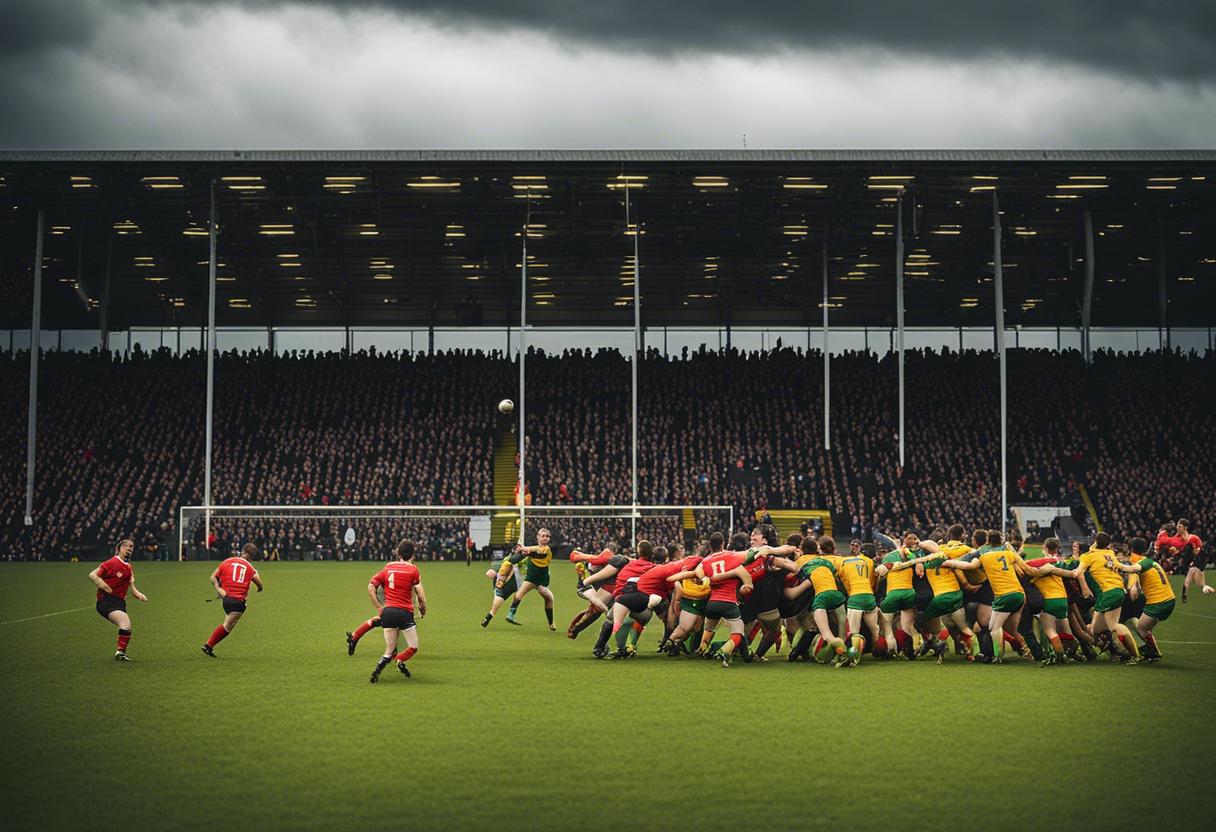Nowlan Park in Kilkenny was named after James Nowlan, known for his lengthy presidency of the GAA. Interestingly, he was also an influential figure in the nationalist politics and Gaelic League, contributing greatly to Irish society. His death occurred a century ago, on June 30th.
The specific details of his birth are still a matter of debate, but based on Lawrence White’s biography entry, it is highly likely that he is the James Nowlan who was christened on July 14th, 1854 at St Canice’s church as the son of Michael Nowlan and Catherine Tully from Green’s Hill, Kilkenny. Much like his father, he pursued the cooper profession, took employment at Sullivan’s Brewing Company and resided at Bishop’s Hill in Kilkenny for an extended period.
In terms of politics, Nowlan was a Parnell supporter, and also associated himself with the Gaelic League when it was founded in 1893. Lawrence White also noted his backing of working-class issues. He was elected as the alderman for St John’s Ward on Kilkenny Corporation under a labour-nationalist campaign in 1899, a role he retained for two decades, interrupted only briefly.
Nowlan’s involvement in the GAA began via the Kilkenny city Confederation hurling club and he served as a county representative on the GAA Central Council from 1896 to 1899, prior to a two-year stint as vice-president.
Following the Parnell split and internal mismanagement, the association’s strength waned. At this point, Nowlan rose to prominence among reformist factions, many of whom, including Nowlan, were part of the clandestine Irish Republican Brotherhood. This group aimed to rejuvenate the association, leading to the approval of a significant restructure during the 1900 annual congress. This overhaul led to the creation of four regional councils to regulate their own football and hurling championships. The Leinster council was established that year and was chaired by Nowlan until 1905.
Elected as the president of the GAA during the September 1901 annual congress, he remained the longest-serving leader of the association until 1921. This tenure saw many prominent offices being headed by IRB activists. Alongside Luke O’Toole from Wicklow, the newly appointed secretary, the duo was credited by Lawrence White for the modern transformation of the GAA, incorporating both administrative and ideological changes.
Significant strides were made towards financial reorganisation providing the GAA a firm business foundation, leading to growth in memberships, formation of numerous local clubs across every county, and closer identification of the GAA with the “Irish-Ireland” movement. The movement was instrumental in promoting Irish language, culture, and domestic products, strengthening the restrictions on participation in foreign games.
Despite Nowlan’s inclination towards Sinn Féin politically, he maintained a neutral political stance in the central council, which had members supporting the Irish Parliamentary Party. He encouraged GAA members to enlist in the Irish Volunteers established in 1913. His participation in the Easter Rising led to his arrest followed by his detention for more than three months in Wakefield Prison in Yorkshire.
During the early phases of the War of Independence, he was incarcerated in Cork for five weeks. With failing health, he resigned from work, relocating to James’s Street Dublin for proximity to the GAA national offices.
On Bloody Sunday, November 21st, 1920, despite receiving information about the murder of 14 British intelligence officers earlier that morning, he backed the decision to proceed with the scheduled Dublin-Tipperary match in Croke Park as one of the senior GAA officials. The crowd at Croke Park were subsequently attacked by the Black and Tans, resulting in 12 deaths as a retaliatory move.
The later years of his presidency faced objections from younger GAA members, who opined that the elderly leadership lacked innovative ideas and vigour. In 1920 congress, when a three-year term limit was introduced for future GAA presidents, he narrowly retained the presidency by a single vote. Voluntarily retiring the next year, he secured a permanent ex-officio seat in the central council and held the honorary president title until his death.
Despite his unwed life, he breathed his last in the Jervis Street hospital and his remains were interred in Glasnevin Cemetery. As a token of immense respect, Kilkenny’s leading GAA ground was christened after him in 1927, and in September 2016, GAA brought forth a new trophy, the James Nowlan Cup, dedicated to the victorious under-21 All-Ireland hurling champions. Regarded broadly for his amiable, unpretentious, and earnest demeanour, Nowlan has been described as a committed yet inflexible administrator by Lawrence White, lacking in creativity. “It’s astonishing to consider his pivotal role in a key organisation during a crucial era in Irish history when his presence mattered greatly,” states the Historic Kilkenny website. The website is of the solid belief that “his influence was considerably instrumental in sculpting GAA into its current form”.

